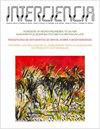媒介文化中的整体法则:雪国列车分析
IF 0.4
4区 综合性期刊
Q4 ECOLOGY
引用次数: 0
摘要
一方面,随着人工智能的进步和媒体的日益数字化,人们希望得到一个更加和平的世界,以及将促进社会秩序、正义和文明的未来主义特征。然而,媒体并没有真正推动社会的发展,因为它扭曲了社会,操纵了各种信息,导致全世界几乎失去信心,并导致人类走向社会异化。媒体叙事和应用将我们带回到那些在历史深处被遗忘的想法,并向我们展示它们如何在各种视觉媒介中被使用,从电视节目剧本到大片。因此,我们失去了成为真正的、认知上的、情感上的、艺术上的、创造性的、审美上的和智力上的人的机会。从技术上讲,12 - 19世纪在德意志文化占主导地位的国家和文明中使用的普通法的类型,“大流行法”一词被用来描述罗马法通过理论和实践发展起来的结构。印度人、中东人、罗马人以及几乎所有欧洲人都曾经使用过这种判断。随着新的法律和道德标准的采用,国内法和国际法律现代化了,总则法被遗忘了。然而,在许多现代叙事中,仍然可以看到Pandect Law的痕迹和应用,尤其是雪国列车,它是展示人类反乌托邦未来的重要电影之一。该研究旨在提供链接,以了解现代媒体如何从神话和早期时代中获取核心力量,并将其与数字化和人工智能时代预测的人类未来联系起来。具体来说,本文旨在举例说明12世纪的大法学与著名的电视连续剧或大片之间的联系,如《雪国列车》。本研究以描述法为基础,运用结构分析和符号学分析的方法,对影像、电视剧和电影进行分析。本文章由计算机程序翻译,如有差异,请以英文原文为准。
PANDECT LAW IN MEDIA CULTURE: SNOWPIERCER ANALYSIS
On one hand with AI advances and media becoming increasingly digitalized, there is the hope of getting a more peaceful world as well as futuristic features that will advance social order, justice, and civilization. Yet, the media does not genuinely advance societies since it distorts them and manipulates all types of information, leading to a loss of confidence practically all around the world, and leading humanity to social alienation. Media narratives and applications take us back to ideas that have been forgotten in the depth of history and show us how they are used in a variety of visual mediums, from TV show scripts to blockbuster films. As a result, we miss the opportunity to be truly, cognitively, emotionally, artistically, creatively, aesthetically, and intellectually human. Technically speaking, the type of common law used between the 12th - 19th century among the nations and civilizations where German culture predominates, the phrase"Pandectic law" is used to characterize the structure that Roman law developed through doctrine and practice. People in India, the Middle East, Rome, and nearly all of Europe once used such types of judgments. With the adoption of new legal and ethical criteria, national and international laws were modernized, and Pandect law was forgotten. However, it is still possible to see the traces and application of Pandect Law in many modern time narratives, especially Snowpiercer, which is one of the important films showing the dystopic future of humanity. This study aims to provide the links to see how modern media is taking its core power from myths and earlier times and connecting them to the predicted future of humanity even in the age of digitalization and AI. Specifically, the paper aims to exemplify the links between the Pandect Law of the 12th century and famous television serials or blockbuster films such as Snowpiercer. Based on a descriptive approach, this study aims to analyze the images, TV series, and movies using both structural and semiotic analysis methodology.
求助全文
通过发布文献求助,成功后即可免费获取论文全文。
去求助
来源期刊

Interciencia
综合性期刊-生态学
CiteScore
0.80
自引率
25.00%
发文量
1
审稿时长
4-8 weeks
期刊介绍:
Interciencia is the monthly multidisciplinary publication of the INTERCIENCIA Association. It is dedicated to stimulate scientific research, its humanitarian use and the study of its social context, specially in Latin America and the Caribbean and to promote communication between the scientific and technological communities of the Americas.
Interciencia has been published uninterruptedly since 1976. Its Founding Director, Marcel Roche (endocrinologist and sociologist of science) was editor until 2008, and thereafter Miguel Laufer (neurobiologist) has been in charge. It has been included since 1978 in the Science Citation Index and other international indexes, and since 2008 it maintains an open access electronic version with material from 2005 onwards.
The priority areas of the journal, without exclusion of other areas, are Agronomy, Arid Lands, Food and Nutrition, Biotechnology, Ecology and Environment, Energy, Innovation and Technology Transfer, Marine Resources, Non-renewable Resources, Science Education, Science Policy, Study and Sociology of Science, and Tropical Forests.
Interciencia publishes in Spanish, Portuguese and English research and review articles, communications and essays, all of which are subjected to peer review. Additionally, it includes non-refereed sections such as Editorial, Letters to the Editor, Open Town Hall, Book Reviews and Upcoming Events.
All the material submitted to the journal for publication and accepted by the Editorial Committee in view of its quality and pertinence is subjected to review by peer specialists in the corresponding fields of knowledge. Neither the INTERCIENCIA Association, nor the journal or the institutions to which the authors belong carry responsibility for the contents. Signing authors are responsible for the material published under their names.
 求助内容:
求助内容: 应助结果提醒方式:
应助结果提醒方式:


